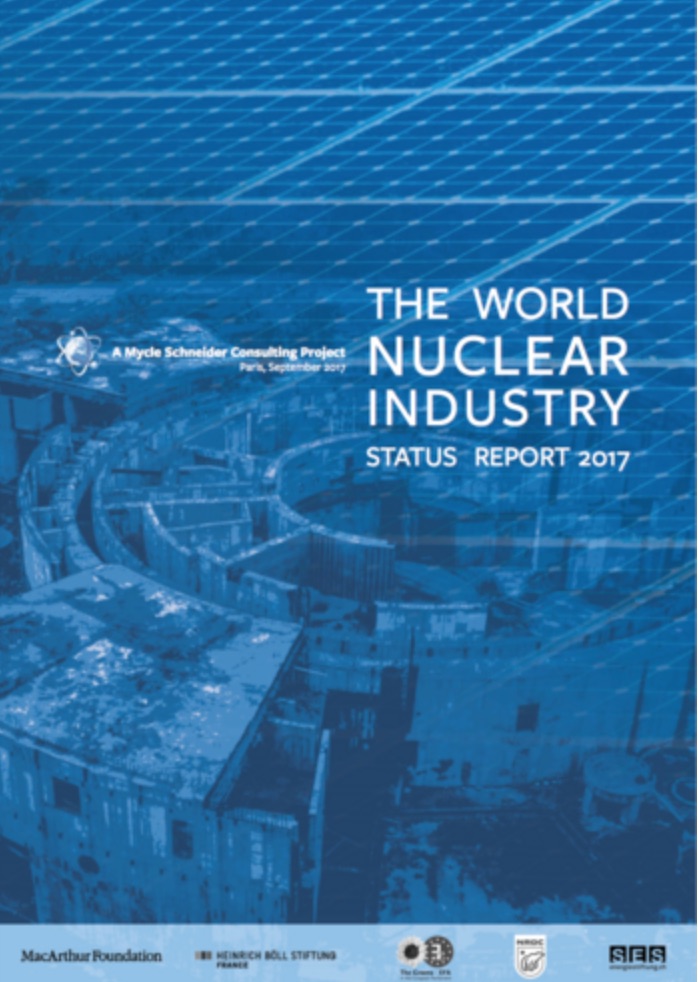Renewables are leaving nuclear in the dust
 The new edition of the World Nuclear Energy Status Report has been released, with some key insights into the dwindling influence of nuclear energy worldwide. You can read and download the full 2017 report here. Here is a summary of findings in the Report about the worldwide status of renewable energy compared to nuclear energy:
The new edition of the World Nuclear Energy Status Report has been released, with some key insights into the dwindling influence of nuclear energy worldwide. You can read and download the full 2017 report here. Here is a summary of findings in the Report about the worldwide status of renewable energy compared to nuclear energy:
Renewables Distance Nuclear
•Globally, wind power output grew by 16%, solar by 30%, nuclear by 1.4% in 2016. Wind power increased generation by 132 TWh, solar by 77 TWh, respectively 3.8 times and 2.2 times more than nuclear's 35 TWh. Renewables represented 62% of global power generating capacity additions.
•New renewables beat existing nuclear. Renewable energy auctions achieved record low prices at and below US$30/MWh in Chile, Mexico, Morocco, United Arab Emirates, and the United States. Average generating costs of amortized nuclear power plants in the U.S. were US$35.5 in 2015.
The World Nuclear Industry Status Report 2017 (WNISR2017) provides a comprehensive overview of nuclear power plant data, including information on operation, production and construction. The WNISR assesses the status of new-build programs in current nuclear countries as well as in potential newcomer countries.
The WNISR2017 edition includes a new assessment from an equity analyst view of the financial crisis of the nuclear sector and some of its biggest industrial players.
The Fukushima Status Report provides not only an update on onsite and offsite issues six years after the beginning of the catastrophe, but also the latest official and new independent cost evaluations of the disaster.
Focus chapters provide in-depth analysis of France, Japan, South Korea, the United Kingdom and the United States.
The Nuclear Power vs. Renewable Energy chapter provides global comparative data on investment, capacity, and generation from nuclear, wind and solar energy.
Finally, Annex 1 presents a country-by-country overview of all other countries operating nuclear power plants.





 September 14, 2017
September 14, 2017